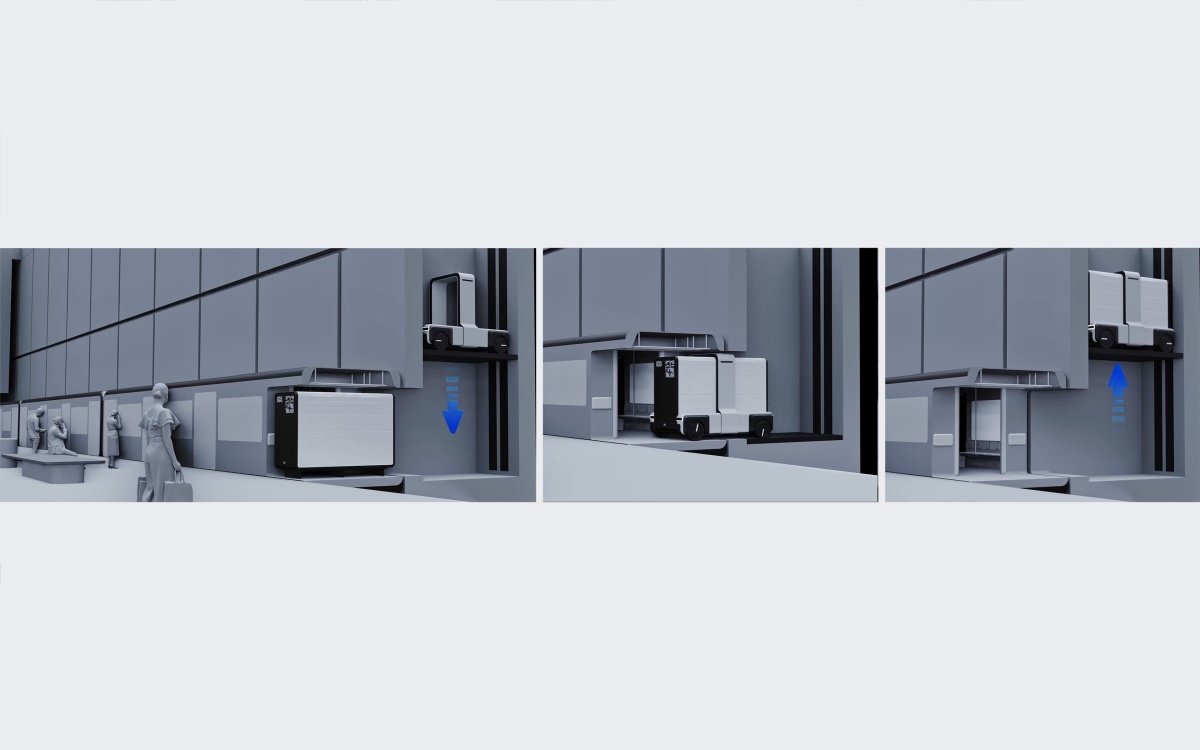The project S-PLY, Autonomous supplying of the center of a metropolis by students of the Studio of Industrial Design at UMPRUM Filip Sobol and David Stingl won 3rd place in the international competition Michelin Movin'On 2023. It is the first time in the more than 20-year history of the international competition with representation in the USA that a Czech project has been awarded.
This year's 23rd edition of Michelin Movin' On 2023's theme was Balancing Sustainability. The difficult task of balancing the three defined pillars of sustainability - people, mutual benefit, and the planet - led to the design of an innovative mobility solution. The awards were decided by an international jury made up of renowned experts in the field, mainly representatives of various automotive companies, and Damien Michelin was an honorary member of the jury.
The award-winning project S-PLY by Filip Sobol and David Stingl was created as a final project in the Studio of Industrial Design at UMPRUM in the winter semester of 2022/23 within the research project Art and Design as a Solution to Changes in Transport with the Emergence of Autonomous Driving. UMPRUM is carrying out research in cooperation with the ŠKODA GROUP with the support of the Technology Agency of the Czech Republic under the leadership of Prof. Ivan Dlabač and Vlastimil Bartas.
The general theme focused on the autonomous metro. Filip Sobol and David Stingl took a broader view of the problem and focused on the issue of metropolitan supply. The authors explored the possibilities of innovations in the current infrastructure of large city centres and the associated environmental burden and reduced quality of life of the inhabitants. "We thought about how to develop the theme and give it added value. The autonomous metro is a common feature in many cities and we have enriched its function by adding catering. Moving the supply underground, while using the existing subway network, is an ideal solution for more comprehensive traffic control in large metropolises such as New York," says David Stingl, one of the young designers.
They propose to use the metro depot for loading goods, where the supply boxes will be loaded into a special space in the trains. The young designers respect the priority of passenger transport, so the placement of the boxes will not restrict passenger transport in any way. At the end of the journey, in the city centre, the boxes will be lifted by an autonomous platform. This will be accessed from the surface by a separate freight elevator located on the opposite side of the platform, so as not to restrict the movement of people.
The platform allows goods to be delivered directly to their destination while reducing the burden on transport infrastructure. It is adapted for easy manoeuvrability in the city thanks to the independent axle. This allows the wheels to turn independently. It is also capable of reversible driving. The proposed design makes the vehicle more efficient in terms of transport speed and autonomy. The overall neutral appearance is adapted to the city so as not to attract too much attention to its design.
The system largely eliminates the standard freight traffic used in the city. It works with multiple box variants, such as the parcel box, replacing courier services and goods drop-off points. Another variant is tailored to supply small businesses. From the outset, the project envisages taking advantage of available and widely used technologies that many companies in autonomous transport already use and are upgrading for existing use.
"I am proud that our students have come up with an idea on the verge of invention. It is an original and strong idea, in which I see the future and a logical solution to transport", evaluates the teamwork of his students Prof. Ivan Dlabač.





